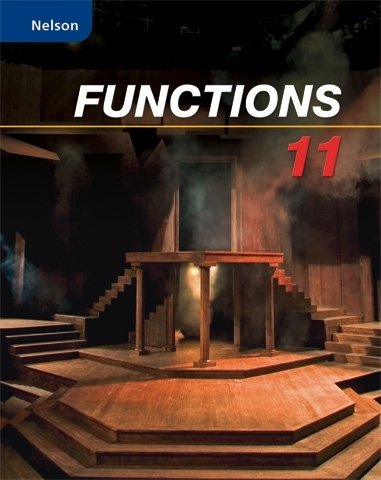
All Solutions
Page 474: Getting Started
If a common difference $d$ is observed, the general term $t_n$ can be obtained as
$t_n=t_1+(n-1)d$
If a common ratio $r$ is observed, the general term is given by
$$
t_n=t_1cdot r^{n-1}
$$
(1) the first term
(2) the rule to get any term $t_n$ from the term before it $t_{n-1}$
If a common difference $d$ is observed, the recursive formula is
$t_n=t_{n-1}+d$ where $n>1$
If a common ratio $r$ is observed, the recursive formula is
$t_n=rcdot t_{n-1}$ where $n>1$
The common difference is 4.
Thus, the next two terms must be
$t_4=19+4=23$
$t_5=23+4=27$
In this case, $t_1=7$, $d=4$
The general term is therefore
$t_n=7+(n-1)(4)$
$t_n=3+4n$
The recursive formula is
$t_1=7; ,; t_n=t_{n-1}+4$ where $n>1$
$t_4=-23-27=-50$
$t_5=-50-27=-77$
The general term is
$t_n=58+(n-1)(-27)$
$t_n=85-27n$
The recursive formula is
$t_1=58 , t_n=t_{n-1}-27$ where $n>1$
$t_4=320cdot 4 = 1280$
$t_5=1280cdot 4 = 5120$
The general term is
$t_n=5cdot 4^{n-1}$
The recursive formula is
$t_n=4cdot t_{n-1}$ where $n>1$
$t_4=250cdot (-0.5)=-125$
$t_5=-125cdot (-0.5)=62.5$
The general term is
$t_n=1000cdot(-0.5)^{n-1}$
The recursive formula is
$t_n=(-0.5)cdot t_{n-1}$ where $n>1$
b.) $t_n=85-27n$ ; $t_1=58 , t_n=t_{n-1}-27$ where $n>1$
c.) $t_n=5cdot 4^{n-1}$ ; $t_n=4cdot t_{n-1}$ where $n>1$
d.) $t_n=1000cdot(-0.5)^{n-1}$; $t_n=(-0.5)cdot t_{n-1}$ where $n>1$
If a common difference $d$ is observed (arithmetic sequence), the general term $t_n$ can be obtained as
$t_n=t_1+(n-1)d$
If a common ratio $r$ is observed (geometric sequence), the general term is given by
$$
t_n=t_1cdot r^{n-1}
$$
(1) the first term
(2) the rule to get any term $t_n$ from the term before it $t_{n-1}$
For arithmetic sequence, the recursive formula is
$t_n=t_{n-1}+d$ where $n>1$
For geometric sequence, the recursive formula is
$t_n=rcdot t_{n-1}$ where $n>1$
$t_n=t_1+(n-1)d$
$46=t_1+(4-1)cdot d$
$248=t_1+(6-1)cdot d$
Equate $t_1$ from each equation
$46-3d=248-5d$
$d=101$
Therefore,
$$
t_5=46+101=147
$$
Here $t_4=46$, $t_6=248$
Both $t_1$ and $d$ is unknown. Solve the system of equations with two unknowns.
$$
t_1=-257
$$
$t_n=-257+(n-1)(101)$
$$
t_n=-358+101n
$$
t_{100}=-358+101cdot 100=9742
$$
b.) $d$ = 101
c.) $t_1=-257$
d.) $t_{100}=9742$
If a common difference $d$ is observed (arithmetic sequence), the general term $t_n$ can be obtained as
$t_n=t_1+(n-1)d$
If a common ratio $r$ is observed (geometric sequence), the general term is given by
$$
t_n=t_1cdot r^{n-1}
$$
(1) the first term
(2) the rule to get any term $t_n$ from the term before it $t_{n-1}$
For arithmetic sequence, the recursive formula is
$t_n=t_{n-1}+d$ where $n>1$
For geometric sequence, the recursive formula is
$t_n=rcdot t_{n-1}$ where $n>1$
$r=dfrac{t_n}{t_{n-1}}$
$r=dfrac{9724.05}{9261}=1.05$
$r=dfrac{10210.2525}{9724.05}=1.05$
Thus, this is a geometric sequence.
$t_n=t_1cdot r^{n-1}$
$t_1=dfrac{9261}{1.05^{4-1}}=8000$
Thus, the recursive formula is
$t_1=8000; ;; t_n=1.05cdot t_{n-1}$ where $n>1$
$t_n=t_1cdot r^{n-1}$
$$
t_n=8000cdot 1.05^{n-1}
$$
t_{10}=8000cdot 1.05^{10-1}=12410.62573
$$
b.) $t_1=8000; ;; t_n=1.05cdot t_{n-1}$ where $n>1$
c.) $t_n=8000cdot 1.05^{n-1}$
d.) $t_{10}=12410.62573$
$S_n=dfrac{n}{2}(t_1+t_n)$
$$
t_n=t_1+(n-1)cdot d
$$
$$
S_n=t_1cdot dfrac{1-r^{n}}{1-r}
$$
The tenth term is
$t_n=t_1+(n-1)cdot d$
$t_{10}=3+(10-1)cdot 2 = 21$
The sum of first ten terms is
$S_n=dfrac{n}{2}(t_1+t_n)$
$$
S_{10}=dfrac{10}{2}(3+21)=120
$$
If $d$ is given, it is arithmetic, if $r$, it is geometric.
The tenth term is
$t_n=t_1+(n-1)cdot d$
$t_{10}=-27+6(9)=27$
$S_n=dfrac{n}{2}(t_1+t_n)$
$$
S_{10}=dfrac{10}{2}(-27+27)=0
$$
If $d$ is given, it is arithmetic, if $r$, it is geometric.
The tenth term is
$t_{10}=48+9(-17)=-105$
$$
S_{10}=dfrac{10}{2}(48+(-105))=-285
$$
If $d$ is given, it is arithmetic, if $r$, it is geometric.
$S_{n}=t_1cdot dfrac{1-r^n}{1-r}$
$$
S_{10}=8192000cdot dfrac{1-(-0.5)^{10}}{1-(-0.5)^{10}}=5;456;000
$$
If $d$ is given, it is arithmetic, if $r$, it is geometric.
b.) 0
c.) -285
d.) 5 456 000
Thus, for the next three years, the populations are:
$t_2=200;000 cdot 1.05= 210;000$
$t_3=210;000 cdot 1.05=220;500$
$$
t_4=220;500 cdot 1.05=231;525
$$
$t_n=t_1cdot r^{n-1}$
Thus, in this case,
$t_n=200;000cdot 1.05^{n-1}$.
Since at present the population is $t_1$, after 10 years, the population is $t_{11}$
$$
t_{11}=200;000cdot 1.05^{11-1}=325;779
$$
b.) population after 10 years is $325, 779$
$2^x=4096$
$2^x=2^{12}$
Equate the exponents
$x=12$
We can confirm this graphically.
x=12
$$
In the following, the left side of the equation is plotted as blue, while the right side is red.
b) $x=3.477$
c) $x=11.264$
d) $8.723$
$y=4^{2x}$
$f(x)=5^{-0.5x}$
$$
g(t)=0.5t^{3x}
$$
bold{Visual; Representation}
$$
Exponential function is function such that the independent variable is in the exponent.
This function is used to model quantities that grows or decays at a certain rate.
For example, a population that grows/decays at a rate of $r$ a year starting from initial population of $P_0$ can be modeled as
$P=P_0(1+r)^t$
where $t$ is the number of years.
If population doubles every $k$ time, the amount after time $t$ can be modeled by
$$
P=P_0times 2^{t/k}
$$

